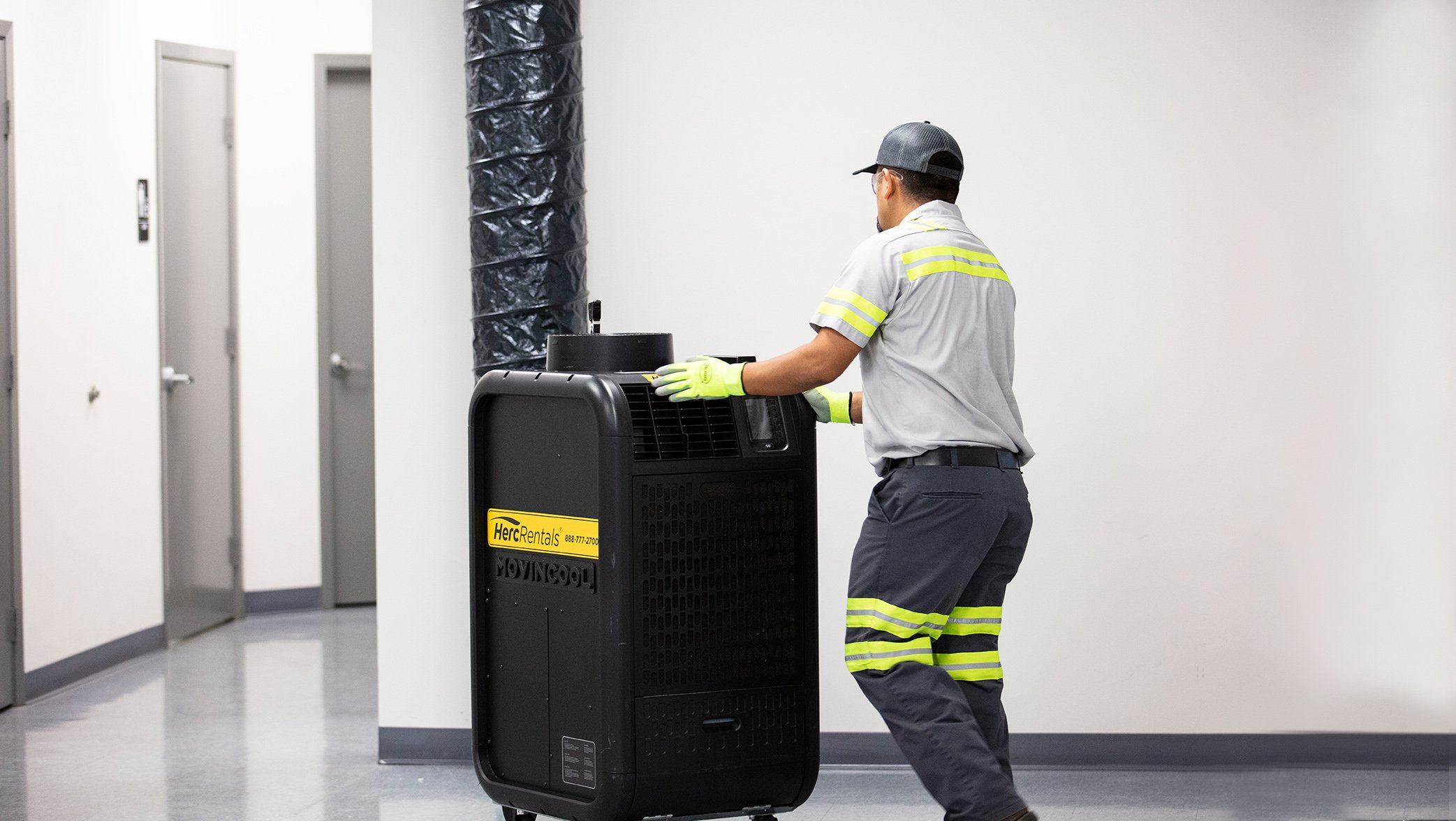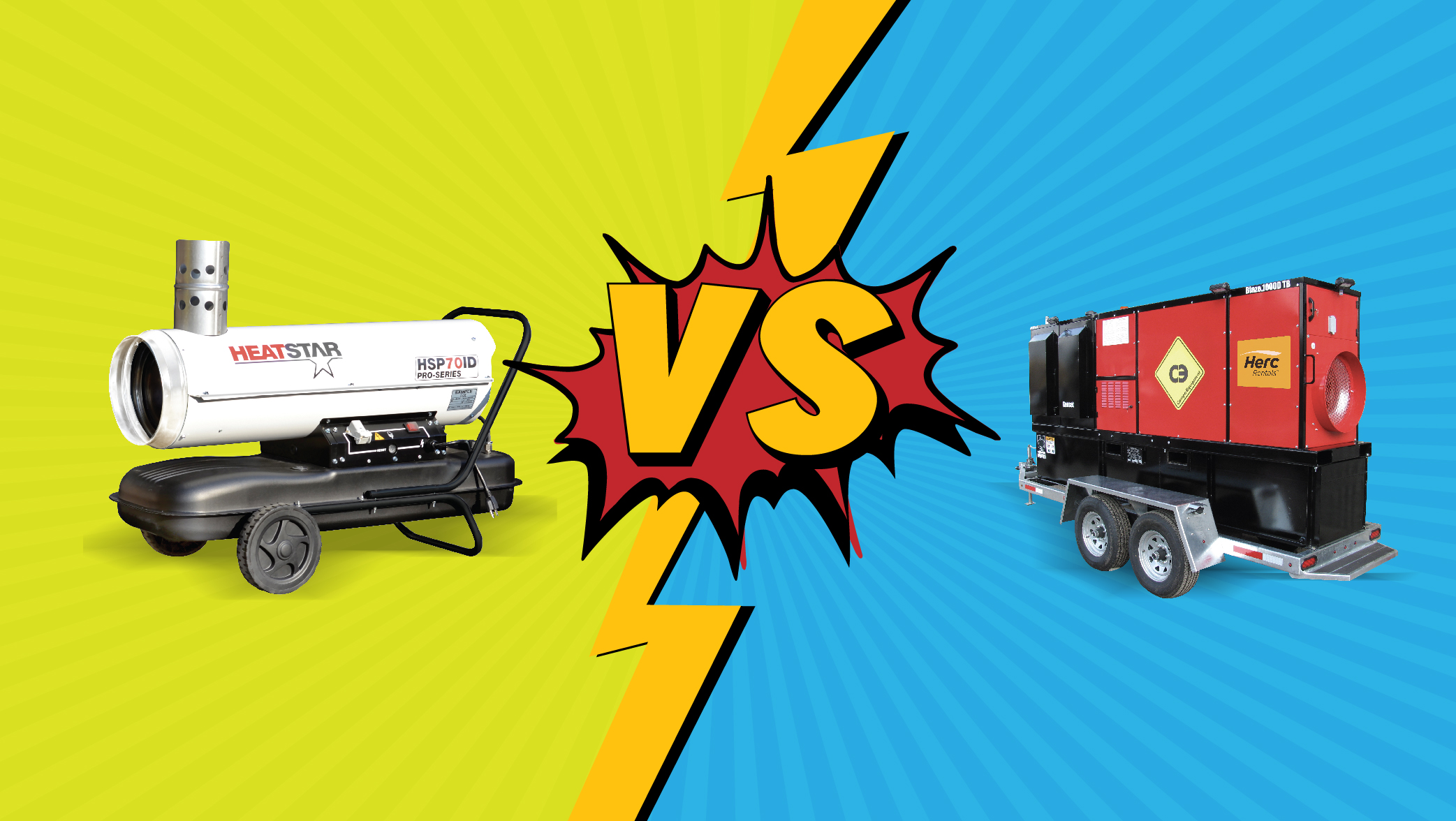June kicks off hurricane season.
It’s important to protect your business or jobsite before, during and after a storm including safeguarding business assets, prepping vital team members, and filing an insurance claim.
BEFORE THE STORM ARRIVES, START BY SURVEYING YOUR SITE
- Secure any equipment or objects susceptible to tropical storm force winds (35 mph)
- Walk through your jobsite and move any slip, trip, or fall hazards that may impede recovery efforts.
- If you are on the first story of a building, try to move any vital equipment such as computers, servers, and important documents off the ground or to a higher floor.
- Reposition company vehicles in a secure location — away from trees and, if possible, in an elevated position in your parking lot.
- Regularly trim limbs off trees encroaching on windows or doors. Consider removing trees that could fall in a storm.
- If you don’t have impact windows, doors, or hurricane shutters, measure your windows and doors, and buy plywood. Then cut and mark the plywood, so you or others know what piece goes where. This will save you time and reduce the stress that comes with an approaching storm.
- Make sure you have at least a three-day supply of drinking water. Restock non-perishable food, medicine and first-aid equipment for workers returning after the storm.
MAKE A PLAN AND PRACTICE IT
If you have a hurricane plan in place — and practice it, you’ll improve your ability to mitigate the impact of a hurricane. Planning an overall hurricane strategy should extend to every part of your business.
- Identify key company personnel and roles. Who will be the last to leave? Who will be the first to return? Who will be management’s point person to remain in contact with employees? How will they remain in contact with them?
- Develop a communications strategy as part of your hurricane plan. This communication plan should be utilized to keep team members aware of the storm and maintain contact with customers and suppliers.
- Once key personnel and roles are established, perform a mock hurricane drill. Make note of what worked, what didn’t and what can be improved upon — and then do it again.
PROTECT YOUR SITE
In the event of a hurricane, one of the first things impacted will be the power.
- Decrease the impact a storm may have on your business by having an uninterrupted power supply. Generators and batteries can be used to power lighting, computers, pumps (if the building floods), fuel tanks for your fleet, and more.
- In the days leading up to a storm’s arrival, work with your IT team to back up all essential computer data and store it in a safer, more secure location off-site. If possible, cover all computers with garbage bags or plastic wrap to prevent water damage.
- If your company or facility must cease operations prior to a storm’s arrival, work with your team to establish shutdown procedures for key operations and services.
WORK REMOTELY IF POSSIBLE
If a hurricane, even a minor one, directly impacts your vicinity, there’s a high probability roads will be closed and access to your business or facility will be cut off. There’s also a good chance many of your team members have evacuated while others may be unable or unwilling to leave their homes.
- Identify personal who can operate/run your business or facility remotely.
- Perform a test of remote capabilities.
- Ensure key personnel has access to cash and fuel (ATMs and fuel pumps run on electricity and will likely be inoperable until power is restored)
- Keep your team together. Some businesses pre-block hotel rooms to ensure safety and keep communication lines open before, during, and after a storm.
UNDERSTAND THE RESTORATION AND REMEDIATION PROCESS
Not all hurricanes are the same. Some bring heavy rains. Others bring high winds. Sometimes storm surge is a huge issue. The point is you need to prepare for it all. If you suffer structural damage to your building/facility or water damage, every second counts once the storm has passed. The quicker you can have a restoration and remediation specialist onsite, the more you’ll minimize the cost of repairs. These specialists have the equipment and capabilities to remove standing water, dry walls and floors, prevent mold from gaining a foothold plus much more.
FILE AN INSURANCE CLAIM
As with any hurricane season, you should expect the unexpected. As we have seen over the past few years, even a tropical storm can be damaging to structures and business productivity. If a storm such as a hurricane, tropical storm, tornado, or flooding causes significant damage, there are multiple steps that need to be taken to file a claim. For more on what to do after a natural disaster, whether you’re a business owner or homeowner, check out this step-by-step guide and FAQs to assist.
During hurricane season, there is no such thing as being overprepared.
Learn more about hurricane preparation, the equipment you may need during and after a storm, and the experts who can help you recover quickly by clicking on these additional blogs:
Preparing for Hurricanes Now Will Save You Later
National Preparedness Month Is the Perfect Time to Get Ready for Disasters


